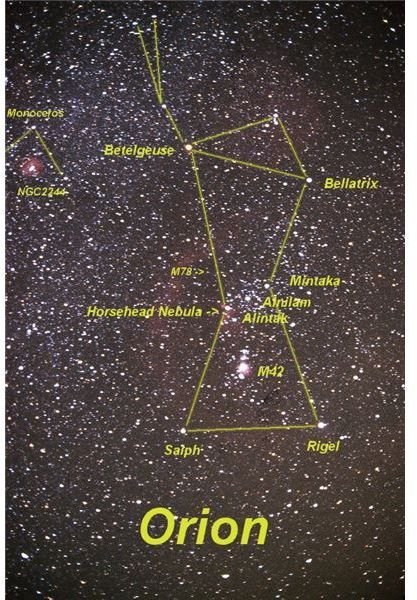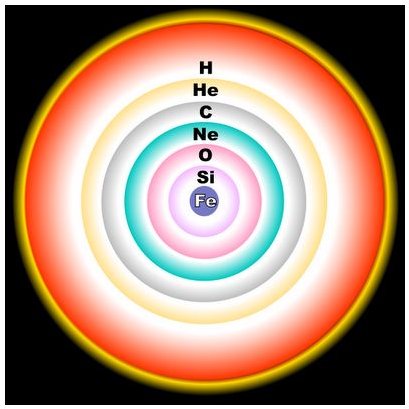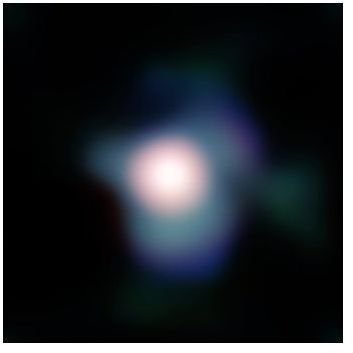Betelgeuse Facts: Learn the Age, Size & Temperature of Betelgeuse
Sadly, this article is not about Michael Keaton’s lovable yet terrifying anarchist ghost. It’s about everyone’s favorite M2 type red supergiant, Betelgeuse! You probably have seen Betelgeuse dozens of times without even knowing it. Looking at the constellation Orion, Betelgeuse is the hunter’s left shoulder. It is one of the most significant stars that we are able to observe, and just might be getting a whole lot more interesting soon.
The first thing that jumps out at you about Betelgeuse is how enormous it is; pulling in at around 15 times the mass of the Sun and 650 times its diameter. If you were to superimpose Betelgeuse into out own solar system, the star’s edge would be somewhere near Jupiter, engulfing all of the inner planets. Betelgeuse also gives off nearly 50,000 times more light than the Sun. Combined with the fact that it is only 640 light years away from the Earth, this means that Betelgeuse is one of the brightest stars in the sky. In fact, there are only 8 other stars that appear brighter than Betelgeuse.
In terms of the galaxy, Betelgeuse is a youngster at only around 10 million years. It is a red supergiant, meaning that during its time on the main sequence, it was one of the biggest stars in the galaxy. The peculiar thing about huge stars is that they are extremely short-lived. The huge amount of pressure that gravity is putting on the core of the star means that Betelgeuse burns through its fuel much faster than other stars. So while it is much larger than our Sun, its lifetime will be orders of magnitude smaller. Our Sun will last another 6 billion years, and Betelgeuse will be lucky to last another 100,000.
The Life and Times of Betelgeuse

Betelgeuse started its life like any other star. The enormous pressure due to gravity caused its core to get so hot that hydrogen spontaneously fused with itself to create helium and energy. As helium started to accumulate at its core, unable to fuse, the star’s energy output began to go down. Without the explosive force of fusion at its core, gravity once again started to make it contract.
At some point, Betelgeuse contracted so much that its core got hot enough to fuse helium into carbon. When this happened, the core all started fusing at roughly the same time, creating an enormous explosion called a helium flash that is about 100 billion times the usual energy output of the star. It is at this time that Betelgeuse left the main sequence, with the enormous energy being produced at its core causing it to balloon up to hundreds of times its normal size. It was now a red supergiant. This is the state we find Betelgeuse in today. Its core has started to collect other elements: oxygen, neon and silicon, and will produce elements all the way up to iron.
The peculiar thing about iron for astronomers lies in its nuclear binding energy, or the energy that is physically holding the atom

together. To fuse an iron atom with something else actually requires more energy than it produces. This means that huge stars end up accumulating iron in their cores, up until their iron cores reach about 1.4 solar masses. When the core gets that massive, the strength of gravity overcomes the forces that hold electrons apart from an atom’s nucleus. In a violent collapse, electrons combine with protons in the core to form neutrons. What is left is a 20 mile wide ball of neutrons sitting where the core used to be. The outer layers of the star begin falling towards the center, accelerating up to a fourth of the speed of light. When the outer layers of the star collide with the neutron star, that enormous kinetic energy gets reflected outwards creating a Type II supernova. For days or even weeks, Betelgeuse would become thousands of times brighter, rivaling the full Moon in the sky. It would be visible during the day and cast shadows at night. This is the precipice that Betelgeuse is dangling over. For the past 20 years it has been contracting at 700 miles per hour, as its core gets bigger and bigger. Be ready for the day that Orion blows out his rotator cuff.
References
https://stars.astro.illinois.edu/sow/betelgeuse.html
https://www.solstation.com/x-objects/betelgeuse.htm
https://imagine.gsfc.nasa.gov/docs/ask_astro/answers/970616b.html
https://www.astromax.org/con-page/images/orion852.jpg
https://trickledown.files.wordpress.com/2009/07/550px-evolved_star_fusion_shells-svg.png
